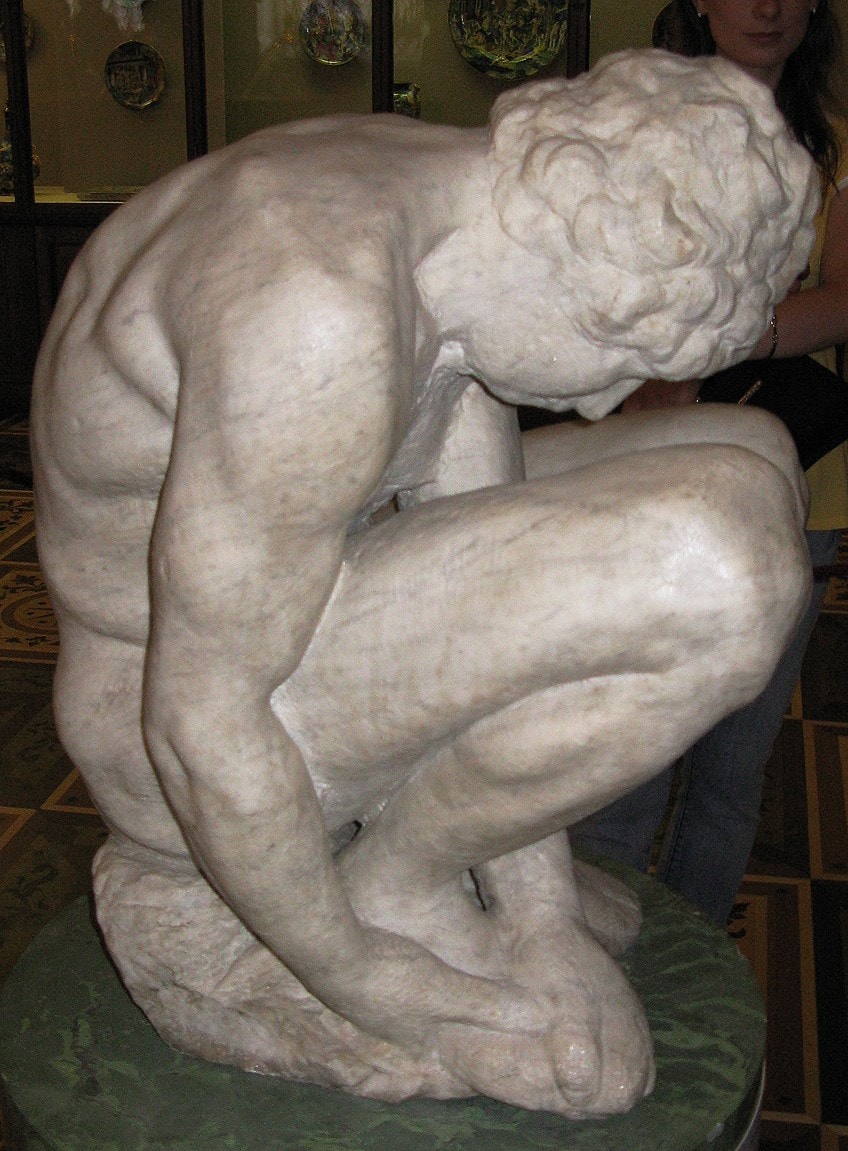Carving Alabaster
What’s Inside a Rock?
Michelangelo said, “
“The sculpture is already complete within the marble block, before I start my work. It is already there, I just have to chisel away the superfluous material.”

Crouching Boy
Alabaster carvings are delightfully touchable, smooth and cool and solid, substantial, yet they can be delicate and translucent.
Begin your alabaster carving with a gem and mineral club class or a life-long learning class in your area. As my instructor directed, be silent and be with your stone, let it tell you what is inside. That may sound odd, yet it does work.
The actual carving process is simple: Put on safety glasses and a mask, brace the stone on a sandbag and use metal tools to shape the stone. Keep the alabaster wet at all times since Colorado alabaster is a gypsum product and must not be inhaled. At the end, use wet-or-dry sandpapers to smooth and polish the surface and your carving is finished.
My very first piece is a netsuke-like small carving of a rabbit, shown in the photo above. I made it with a pocket knife and sandpapers, and soon realized I was hooked on carving. Hunks of alabaster came with me when I moved houses, and they sit there waiting inspiration.
Ancient alabaster in the Middle East is a harder, calcite version of the stone. For inspiration, search on “ancient alabaster art” for photos of vases, statues, and ornamental works, or visit your local art museum.
Carving stone isn’t limited to alabaster. If a diamond will cut the gem, carve away with a flex shaft and various shaped diamond bits. Polish as usual for that gemstone, and enjoy the process. Below is a nephrite jade carving I made into a necklace pendant.




